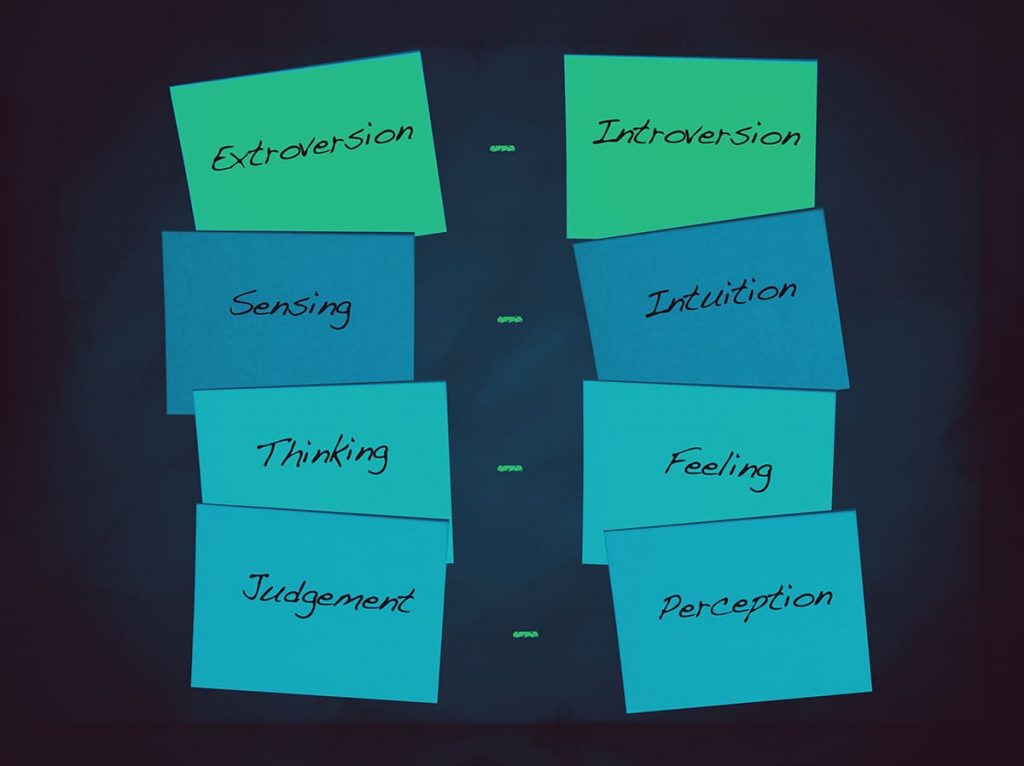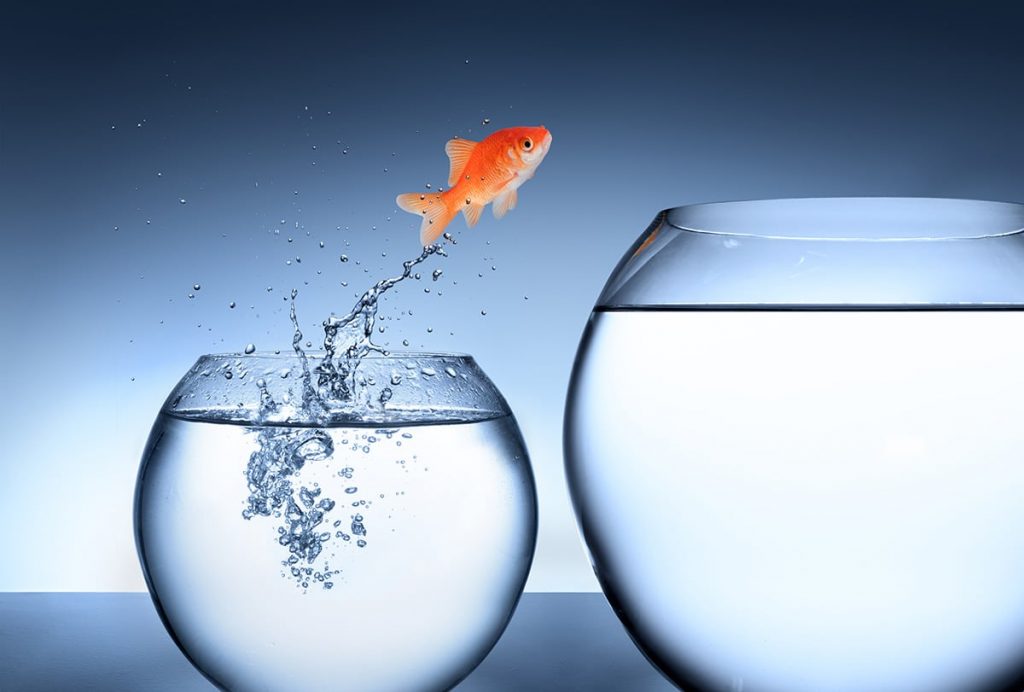
Self-knowledge helps us to better navigate this complicated world. It enables us to have more success in life, for example in our job or in our relationships. It also makes it easier for us to find our place in life. However, in order to gain self-knowledge, we must first get to know ourselves. A personality test can help with this.
There are various models on the basis of which such tests can be created. One of the best known is the Myers and Briggs personality model with its 16 personalities. In this article you will learn more about the thinkers behind the test, its peculiarities and the importance for today's society.
The many different characters of people seem to be a mystery. But a handful of intellectuals have dedicated themselves to the task of shedding more light on this diversity. Among them were the US-Americans Katherine Cook Briggs (1875 to 1968) and her daughter Isabel Briggs Myers (1897 to 1980). The two women were not psychologists. But they belonged to the upper class and enjoyed a good education.
The two came into contact with the teachings of the Swiss psychologist Carl Gustav Jung (1875 to 1961). Jung is considered the founder of analytical psychology. Among other things, he is known for his formulation of psychological types, about which he wrote a book in 1921. Briggs and Myers constructed the so-called Myers-Briggs type indicator, with which every person can be classified into one of Jung's personality types. They published it in 1944 with a commercial purpose.
However, the personality model did not end with Briggs and Myers. The American psychologist David West Keirsey (1921 to 2013) also dealt with the topic. He published a freely available further development of the type indicator. The resulting personality model is widely used today. In the USA in particular, it helps HR decision-makers to filter out the right candidate from a large pool of applicants.
Myers and Briggs' psycho test consists of a series of questions that the participant is asked to answer honestly. In this way, they explore the dimensions of the participant's personality. This involves a total of four categories, which are expressed to varying degrees in each person. In each category there are two opposing traits.
For example, the first category is about introversion and extraversion. Every person has an individual expression of these traits. You can be very extroverted or very introvert. It is also possible that neither trait is as pronounced in you. But most people tend more or less strongly toward one of the two traits - in each of the four categories.
The test combines the four predominant characteristics in each case to one of 16 personalities. The letters are used for this purpose. In the first category, the test taker receives either an I or an E, depending on which suits him or her better. In the following paragraphs we explain what the characteristics mean.
You have probably dealt with the characteristics of the four categories yourself, or at least heard about them. Assign yourself to the characteristics that you think apply to you more. Write down the appropriate letter in each category in turn and learn more about yourself as the article progresses.
The advantages for you once again at a glance:

How we approach others is one of our most striking characteristics.
Intuitive or sensitive: The way you see the world is one of the categories that determine your classification into the 16 personalities.
Another dimension of your personality revolves around the way you make decisions: pudding or ice cream for dessert, education or study, this employer or that?
When you need to complete a task, there are many ways to get there. You are likely to devise a tactic or strategy.
If you have found yourself in all four categories, you have now written down four letters. With two characteristics in each of the four categories, there are exactly 16 possible combinations, for example INFJENTP or ESTJ. This is your personality according to the Myers Briggs Type Indicator. We will explain what is behind the 16 personalities in the next but one section. Before that, we would like to point out a supplementary addition, which is more of a side issue.
Sometimes the categories also talk about the fifth level, the identity -T or -A. This is about the temperament with which you proceed. Are you rather cautious in your actions, prone to perfectionism and always worrying? Then the correct suffix is -T. Assertive people, on the other hand, get the suffix -A if they tend to be relaxed and free of worry. Your suffix is simply added to the respective personality, for example INFJ-A, ENTP-T or ESTJ-A.
The result of the test is an individual classification into one of 16 personality types or temperament types. But before we come to the individual personalities and explain them in more detail, we will briefly go into the achievement of the US American psychologist David West Keirsey. He has divided the 16 personalities into four groups:
- Guardians: They are always S and J (sensitive judges).
- Artists: They are always S and P (sensitive perceivers).
- Idealists: They are always N and F (intuitive feelers).
- Rationalists: they are always N and T (intuitive thinkers).
Today we know: Most people - men and women - belong to the guardian group. The least strong group in both sexes are the rationalists.

Eight letters in four categories (I/E, N/S, F/T and J/P) allow 16 possible combinations. Each possibility stands for exactly one personality. Each of the 16 personalities is distinguished by characteristics that are typical for them. You can check here what your result is. Which 16 personalities are there? Find out more in the following lines.
But beware: the Myers Briggs Personality Test (MBTI) doesn't actually go hand-in-hand with a self-assessment, which is what we've been guiding you towards in this article. It's a rather superficial assessment. Myers and Briggs have developed a set of questions that allows for a much more objective assessment.
ESTJ are realistic. They think clearly and make decisions relatively easily, even when it comes to the big and important decisions of life.
ISTJ are very practically oriented and ambitious. Facts are very close to their hearts, and they are also reliable.
ESFJ prove to be helpful, moreover, they are caring. This makes them very popular contemporaries with correspondingly good friendships.
ISFJ are passionate and devoted. Their warm and humble nature is attractive to others. Focus is important to them, but it also comes easily to them.
ESTP are particularly smart. But they are rather not couch potatoes, as you might think now. They have a lot of energy that leads them on all kinds of adventures.
ISTP are also practitioners. Their direct and open manner sometimes comes across as a bit brusque. But most of what they do and say is well thought out, so they are more often convincing.
ESFPs are considered the spontaneous ones and they live their lives with a lot of energy. They are able to inspire others for their causes, but they also like to rave.
ISFP have many friends, because they give themselves sincerely sympathetic and they are attentive. Compromise is part of life for them.
ENFJ are charming fellows. When they have an idea, they easily sweep others along. They also have a very inspiring effect on others.
INFJ go their way when they have a goal. Other people also often perceive them as true idealists and join them. However, INFJ are quiet and maintain their focus.
INFP are friendly and helpful people. They are especially noticeable for their sensitivity and selflessness.
ENFP on the other hand, are self-confident and often have a good mood that infects others. They live out their creative streak with much joy.
ENTJ cultivate efficiency. Organization is everything, and they are often very idiosyncratic. They also have a lot of imagination.
INTJ are very intelligent, but often also real perfectionists. They like to plan and proceed strategically.
ENTP are also very smart. They always manage to inspire other people. They are helped by their creativity and a large portion of courage.
INTP spend a lot of time acquiring new knowledge. They go their own way and do not like to be distracted. They know how to overcome problems.
Today, the Myers Briggs Type Indicator is widely used, especially in professional and private contexts.
Companies like to know exactly who the people are who want to work for them. So around the application process, you may be asked to take a personality test like the MBTI. In some jobs, certain personalities are more in demand than others. Teams, for example, want team players, while research calls for more rational types.
Privately, such a test helps you to learn more about yourself. Did your result help you to get to know yourself better? Even if it completely misses your true personality, you found out something more about yourself. In order to grow and develop, such tests are therefore helpful in many cases.
If you don't like the result, don't worry: all the traits are best viewed neutrally, because that's what they are. Every character is an asset to the world! But of course, it's still possible that you really didn't end up in the one of the 16 personalities that applies to you. Unfortunately, even the Myers Briggs model has its limitations.
Although the results are very interesting and revealing for many people, the test is definitely not the best tool available to psychology today to study personality. According to research, a large proportion of participants receive a different result when repeated. Depending on the study, this is about 40 to 75 percent. Critics therefore complain that the MBTI is not suitable for professional purposes.
On the other hand, the official website of the Myers & Briggs Foundation states that the test serves its purpose. Accordingly, there are studies that speak for the validity of the test results. However, these statements do not silence the critics. Ultimately, it is important not to rely too much on the test and to be open to the alternatives.

The MBTI is a good test that many people can use to learn more about themselves and their inner thinking. However, it has some disadvantages compared to other models. It is rather theoretical in nature and provides rigid results. We at Greator find the DISG personality test therefore more advantageous, you want to explore yourself more deeply.
The DISG model has the following Advantages:
- simple: simple test
- practical: the focus is on external behaviour, not on internal thinking
- clearly arranged: only four behaviour types instead of 16 personalities
- instructive: it helps you to understand yourself and others better
For these reasons, we recommend the scientifically based DISG test. It provides you with a comprehensive insight into your personality. You learn more about your individual strengths and weaknesses. On our website you have the possibility to take such a test. Personality Test to do. Answering the 16 questions only takes a few minutes and participation is free of charge!

